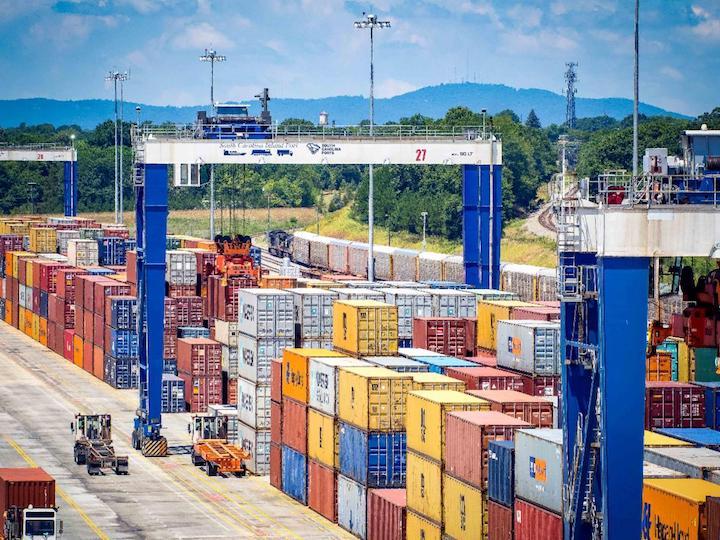SC Ports welcomes American solar module maker to SC
May 13, 2020S.C. Ports Authority has announced that First Solar, Inc., America’s largest solar manufacturer, has selected Greenville, S.C., for its new distribution hub on the East Coast.

Headquartered in Arizona, First Solar operates the Western Hemisphere’s largest photovoltaic (PV) module manufacturing footprint in Northwest Ohio, as well as factories in Malaysia and Vietnam. The company plans to open a 450,000-square-foot distribution hub in Greenville — its first in the Southeast — to warehouse and stage deliveries for its customers in the United States.
“As America’s solar company, First Solar is proud to power communities, innovation and prosperity with our solar module technology,” said Bart Verbeke, First Solar’s Senior Manager of Global Logistics. “Our investment in this distribution hub will help enable our commitments to deliver modules where they’re needed when they’re needed, thanks to the connectivity that S.C. Ports is able to offer.”
First Solar will benefit from both the Port of Charleston’s access to international markets, such as Vietnam, and its overnight rail connection from the Port of Charleston to Inland Port Greer, S.C. Ports’ inland operation in Upstate South Carolina.
First Solar anticipates bringing up to 7,000 containers per year through the Port of Charleston, beginning in late May. Upon arrival at Inland Port Greer, cargo will be transported to First Solar’s nearby distribution hub in Greenville.
“We are thrilled to announce First Solar’s decision to invest in South Carolina, and we extend a warm welcome to them as a customer of S.C. Ports,” S.C. Ports Authority President and CEO Jim Newsome said. “S.C. Ports offers access to global markets, efficiently run terminals and rail-supported inland ports to meet our customers’ needs. We look forward to supporting First Solar’s efforts to deliver American-designed solar modules to their customers in the United States.”
The facility sits near Inland Port Greer, which is located along Interstate 85 in Upstate South Carolina between Atlanta and Charlotte. Inland Port Greer extends the Port of Charleston’s reach 212 miles inland by providing overnight rail service via Norfolk Southern. The inland terminal reaches 90 million consumers within a 500-mile radius, which can be reached in a one-day truck trip.
S.C. Ports Authority opened Inland Port Greer in 2013 with BMW Manufacturing Co. as its launch customer. The inland operation has seen consistent growth since then as more companies use it to move cargo overseas and to handle imports for a quickly growing Southeast population. Inland Port Greer handled a record 157,000 rail moves in calendar year 2019, up 29% year-over-year.
Similar Stories

Port of Long Beach reaches all-time record in October
View Article
Savannah container volumes up 10 percent in October
View Article
New funding propels Pier Wind at Port of Long Beach
View Article
Victoria International Container Terminal to conduct rural tailgate inspections
View Article
Port of Hueneme and Port of Paita sign MoU
View ArticleGrain the dominant commodity as end of marine shipping season in the Great Lakes and St. Lawrence Seaway draws near
As the 2024 marine shipping season continues into its final months, grain remains the dominant commodity trafficking the Great Lakes and St. Lawrence Seaway for two years in a row.
View ArticleGet the most up-to-date trending news!
SubscribeIndustry updates and weekly newsletter direct to your inbox!





